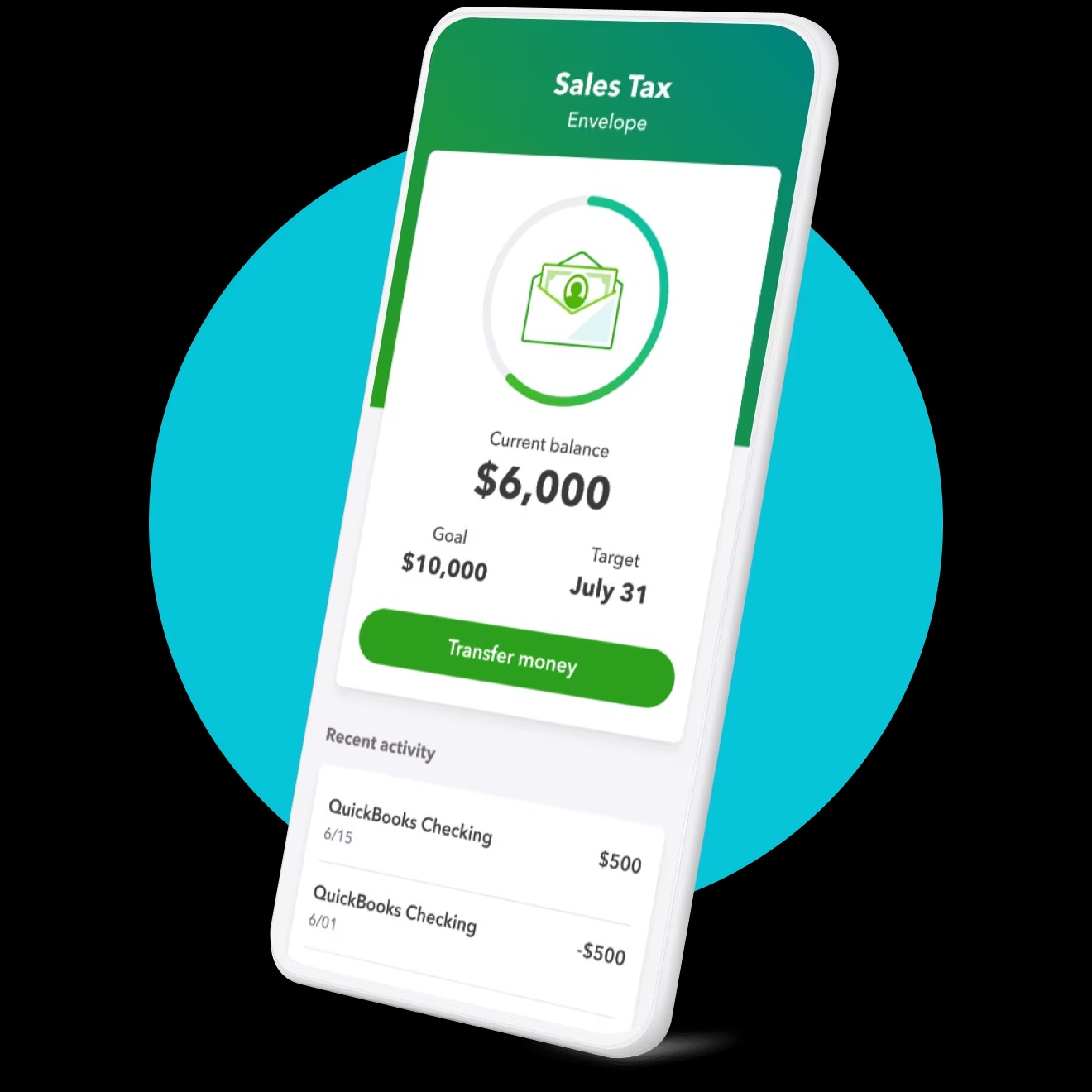Home>Finance>How Long Does It Take For Authorized User To Be Removed On Credit Report


Finance
How Long Does It Take For Authorized User To Be Removed On Credit Report
Modified: February 21, 2024
Find out how long it takes for an authorized user to be removed from your credit report and improve your finance situation with our expert advice
(Many of the links in this article redirect to a specific reviewed product. Your purchase of these products through affiliate links helps to generate commission for LiveWell, at no extra cost. Learn more)
Table of Contents
- Introduction
- Understanding Authorized Users on Credit Reports
- Reasons for Removing an Authorized User
- How Long Does it Take to Remove an Authorized User?
- Factors Affecting the Timeline of Authorized User Removal
- Methods to Remove an Authorized User from a Credit Report
- Potential Impact on Credit Scores
- Conclusion
Introduction
Being an authorized user on someone else’s credit card can have both positive and negative implications for your credit report. While it can help you build credit history and improve your credit score if the primary account holder has a good payment history, there may come a time when you need to be removed as an authorized user.
Whether you’re looking to remove yourself from an account due to a change in relationship status, a desire for financial independence, or other personal reasons, understanding how long it takes to remove an authorized user from a credit report is essential.
In this article, we will explore the timeline for authorized user removal and the various factors that can affect it. We will also discuss the methods available to remove an authorized user and consider the potential impact on credit scores.
Whether you’re considering adding someone as an authorized user or you’re an authorized user yourself, gaining a deeper understanding of this process will empower you to make informed decisions regarding your credit history and financial future. So, let’s dive in and explore how long it takes for an authorized user to be removed from a credit report.
Understanding Authorized Users on Credit Reports
Before delving into the timeline for authorized user removal, it’s important to understand what being an authorized user means and how it affects your credit report.
An authorized user is an individual who is allowed to use someone else’s credit card for purchases but is not legally responsible for repaying the debt. The primary account holder adds the authorized user to their credit card account, and the account activity, including payment history and credit limit, may appear on both the primary account holder’s credit report and the authorized user’s credit report.
For the authorized user, being added to a credit card account can have both positive and negative impacts. On the positive side, if the primary account holder has a good payment history and low credit utilization, it can help the authorized user build credit history and improve their credit score. This can be beneficial for individuals with limited credit history or those looking to rebuild their credit.
On the other hand, if the primary account holder has late payments, high credit utilization, or other negative factors, it can negatively impact the authorized user’s credit report. Thus, it’s crucial to carefully consider becoming an authorized user on someone else’s credit card and regularly monitor your credit report to ensure its accuracy.
Understanding the dynamics of authorized user accounts and their implications on credit reports sets the foundation for comprehending the process of authorized user removal.
Reasons for Removing an Authorized User
There are various reasons why someone may want to remove an authorized user from their credit card account. Here are a few common scenarios:
- Change in Relationship: If the authorized user is a former spouse or partner, it’s often necessary to remove them to sever financial ties after a breakup or divorce.
- Financial Independence: As an authorized user, you might have initially relied on someone else’s credit history to establish or improve your own credit. However, as you build your own credit profile and acquire your own credit accounts, you may choose to remove yourself from the authorized user status.
- Concerns about Credit Mismanagement: If the primary account holder consistently misses payments, maxes out credit cards, or engages in other financially irresponsible behaviors, you may want to distance yourself from their credit activity to protect your own credit score and financial standing.
- Privacy Concerns: Some authorized users may want to ensure their personal information, such as credit utilization and spending habits, remain private by removing themselves from the primary account holder’s credit card account.
- Responsibility for Debt: Although authorized users are not legally responsible for repaying debt on the account, there may be situations where the primary account holder is unable to manage their financial obligations. In such cases, removing yourself as an authorized user can prevent any potential liability.
Each individual’s circumstances may vary, and these reasons represent just a few examples of why someone might choose to remove an authorized user. It’s essential to evaluate your own financial situation and goals before making a decision.
With an understanding of the reasons for removing an authorized user, let’s proceed to explore the timeline for this process.
How Long Does it Take to Remove an Authorized User?
The timeline for removing an authorized user from a credit report can vary depending on several factors. In general, the process can take anywhere from a few days to several weeks.
One common method to remove an authorized user is by contacting the credit card issuer directly. You can call the customer service number provided on the back of the credit card and request the removal of the authorized user. The credit card issuer will typically require information to verify your identity and may ask for a written request as well.
Once the request is submitted, the credit card issuer will update the account information and inform the credit reporting agencies of the change. The credit reporting agencies, in turn, will update their records and remove the authorized user from the credit report. This process may take a few days to reflect accurately on the credit report.
It’s important to note that while the credit card issuer can remove the authorized user from their records and report, they cannot dictate how quickly the credit reporting agencies will update their data. The credit reporting agencies have their own processes and timelines for updating information. Therefore, it’s possible that the removal may not be immediately reflected on the authorized user’s credit report.
In some cases, it may be necessary to follow up with the credit card issuer and the credit reporting agencies to ensure the removal is processed in a timely manner. This can involve providing any additional documentation or contacting the credit reporting agencies directly to request an update.
It’s also worth mentioning that the timeline for authorized user removal can be affected by external factors such as holidays, weekends, and any backlogs or delays in processing requests. It’s advisable to be patient and allow sufficient time for the removal to be completed before expecting changes on your credit report.
Now that we’ve discussed the timeline for authorized user removal, let’s explore the various factors that can affect the timeframe.
Factors Affecting the Timeline of Authorized User Removal
Several factors can influence the timeline for removing an authorized user from a credit report. Understanding these factors can help you manage your expectations and navigate the process more effectively. Here are some key factors to consider:
- Credit Card Issuer’s Policies: Each credit card issuer may have different procedures and processing times for removing authorized users. It’s important to familiarize yourself with their specific policies and requirements.
- Credit Reporting Agencies: The credit reporting agencies, such as Equifax, Experian, and TransUnion, play a crucial role in updating the information on credit reports. These agencies have their own internal processes and timelines for processing changes, which can vary.
- Documentation and Verification: The credit card issuer may require certain documentation, such as a written request, proof of identity, or other supporting documents. Providing accurate and complete information in a timely manner can expedite the removal process.
- Communication and Follow-Up: Regular communication and follow-up with the credit card issuer and credit reporting agencies can help ensure that the removal request is being processed. If there are any delays or discrepancies, addressing them promptly can help resolve any issues that may arise.
- Volume and Backlogs: During periods of high volume or backlogs, such as holidays or peak times, the processing of removal requests may take longer. It’s important to be mindful of these factors and allow for extra time when initiating the removal process.
- Other Account Activities: If there are ongoing disputes, inquiries, or other account activities associated with the credit card account, it may affect the timeline for authorized user removal. These additional processes may need to be resolved before the removal can be processed.
While these factors can impact the timeline for authorized user removal, it’s important to remain patient and persistent throughout the process. Regularly monitoring your credit report and following up with the necessary parties can help ensure that the removal is processed accurately and in a timely manner.
Now that we’ve explored the factors that can affect the timeline, let’s move on to discussing the methods available to remove an authorized user from a credit report.
Methods to Remove an Authorized User from a Credit Report
When it comes to removing an authorized user from a credit report, there are a few methods you can consider. Here are some common approaches:
- Contact the Credit Card Issuer: One of the simplest and most straightforward methods is to contact the credit card issuer directly. Call their customer service number, provide the necessary information to verify your identity, and request the removal of the authorized user from the account. The credit card issuer will then update their records and notify the credit reporting agencies of the change.
- Submit a Written Request: In addition to contacting the credit card issuer over the phone, you may be required to submit a written request. This can be in the form of a letter or an online form, depending on the processes and procedures of the credit card issuer. Ensure that you include all the required information and any supporting documentation, such as proof of identity.
- Follow Up with the Credit Reporting Agencies: While the credit card issuer is responsible for notifying the credit reporting agencies of the removal, it can be helpful to follow up with the credit reporting agencies directly. Contact Equifax, Experian, and TransUnion and inquire about the status of the removal. This can ensure that the change is being processed and reflected on your credit report.
- Dispute Inaccurate Information: If the authorized user information is not being removed from your credit report despite your best efforts, you can consider filing a dispute with the credit reporting agencies. Provide them with any documentation or evidence that supports your claim for removal. The credit reporting agencies will then investigate the dispute and make the necessary updates to your credit report.
- Seek Professional Assistance: If you encounter significant challenges in removing an authorized user from your credit report, it may be beneficial to seek professional assistance. Credit repair companies or credit counseling agencies can provide guidance and support in navigating the process, ensuring that your credit report is accurate and up to date.
Remember, it’s essential to maintain open communication with the credit card issuer and credit reporting agencies throughout the removal process. Regularly follow up and monitor your credit report to confirm that the authorized user has been successfully removed.
Now that we’ve discussed the various methods to remove an authorized user from a credit report, let’s explore the potential impact on credit scores.
Potential Impact on Credit Scores
The removal of an authorized user from a credit report can potentially have an impact on credit scores, although the extent of the impact may vary depending on individual circumstances.
When you are removed as an authorized user, the credit card account’s history, including payment history, credit utilization, and age of the account, may no longer be factored into your credit score calculation. This can affect your credit profile in several ways:
- Loss of Benefit: If the primary account holder had a positive credit history with low credit utilization, being an authorized user helped boost your credit score. With the removal, the positive impact of the account’s history may no longer be reflected in your credit score.
- Potential Dip in Credit Score: If the primary account holder had a negative credit history with late payments or high credit utilization, the removal of the authorized user status may result in a slight improvement in your credit score.
- Credit Mix Changes: The removal of an authorized user account may also affect the mix of credit types in your credit profile. If the authorized user account was the only credit card account in your name, its removal may impact your credit mix, which is a factor considered in credit scoring models.
- Other Factors Remain Intact: It’s important to note that even after the authorized user removal, other factors such as your payment history, credit utilization on your own accounts, and your overall credit behavior will continue to influence your credit score.
It’s essential to keep in mind that credit scoring models are complex, and the impact of authorized user removal can vary from person to person. Additionally, different credit scoring models may weigh factors differently, which can lead to variations in the impact on credit scores.
Remember, maintaining good credit habits, such as making timely payments, keeping credit card balances low, and managing your overall credit responsibly, is crucial for maintaining and improving your credit score. Even with the removal of an authorized user account, you can continue to work on building a strong credit profile.
Now that we’ve discussed the potential impact on credit scores, let’s wrap up our discussion.
Conclusion
Removing an authorized user from a credit report is a process that requires attention to detail and patience. Understanding the timeline, factors affecting removal, and available methods can help facilitate a smoother experience.
When considering removing an authorized user, it’s essential to evaluate your reasons and goals. Whether it’s due to a change in relationship, financial independence, concerns about credit mismanagement, privacy issues, or potential liability, make an informed decision based on your unique circumstances.
Keep in mind that the timeline for authorized user removal can vary, ranging from a few days to several weeks. Factors such as the credit card issuer’s policies, the credit reporting agencies’ processing times, and documentation requirements can all impact the timeframe.
To initiate the removal, contact the credit card issuer directly and follow their procedures, including written requests if necessary. Regular communication and follow-up with both the credit card issuer and the credit reporting agencies can help ensure that the removal process is progressing smoothly.
While the removal of an authorized user may have an impact on credit scores, the extent of the impact will depend on individual circumstances. Loss of benefit, potential credit score dips, changes in credit mix, and other factors should be considered. However, it’s important to remember that maintaining responsible credit habits is key to building and maintaining a strong credit profile.
Whether you’re looking to remove an authorized user or considering becoming one, taking control of your credit history and making well-informed decisions is crucial for your financial well-being. By understanding the process of authorized user removal and its potential impact, you can navigate the world of credit with confidence.
Now that you have a comprehensive understanding of how long it takes to remove an authorized user from a credit report, you can proceed with the necessary steps and make the best decision for your financial future.














